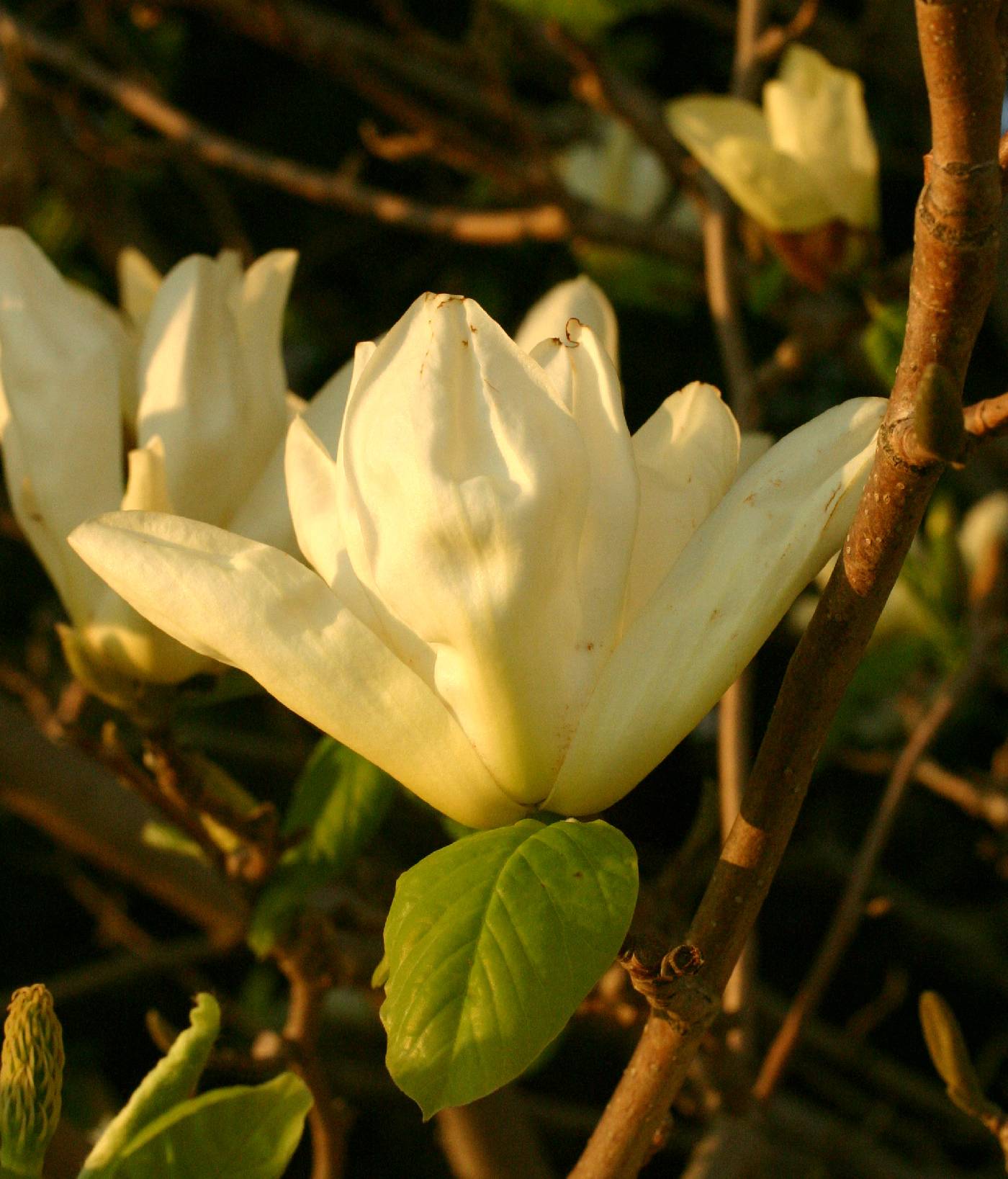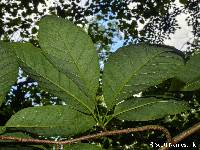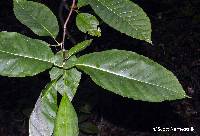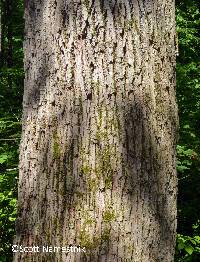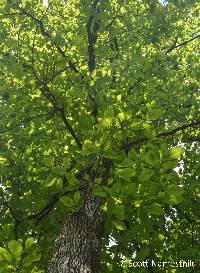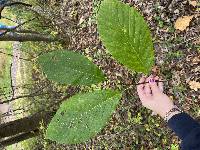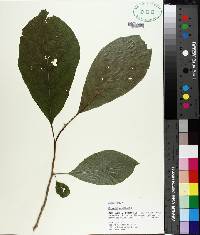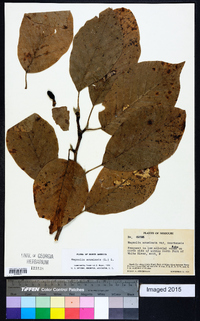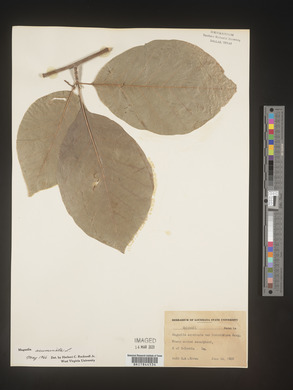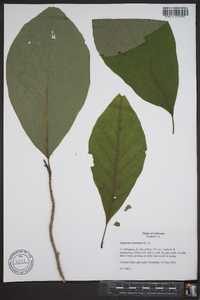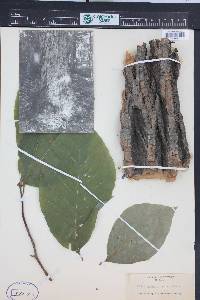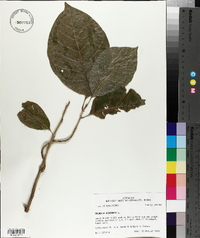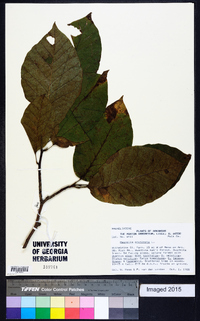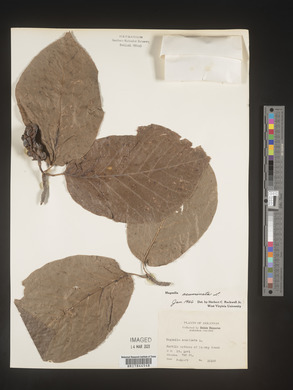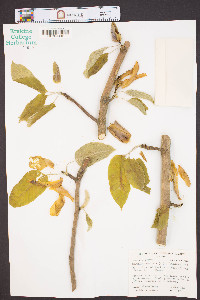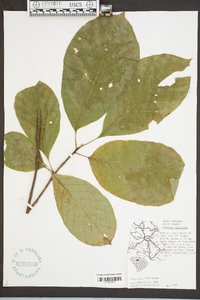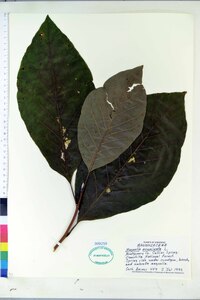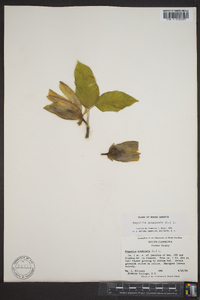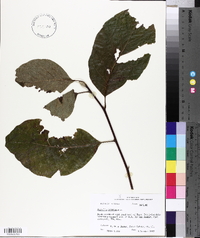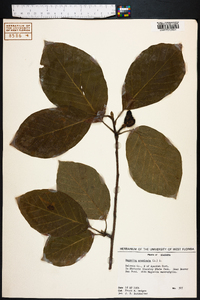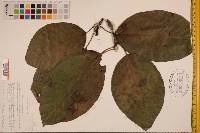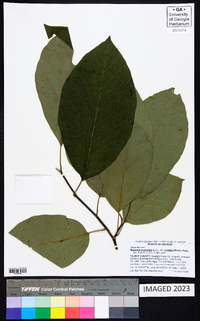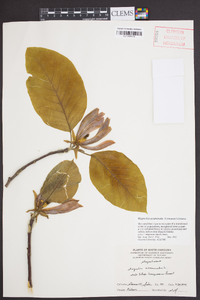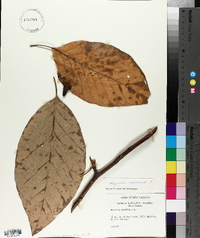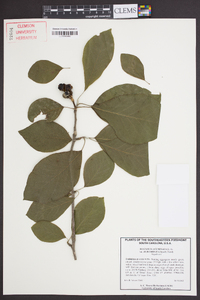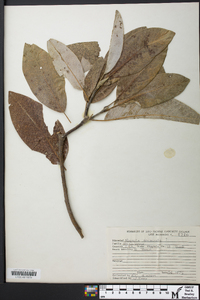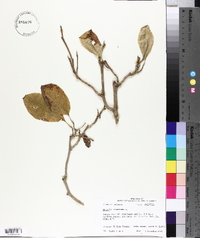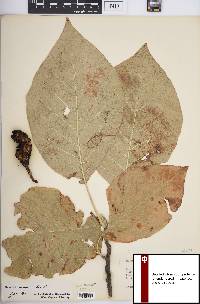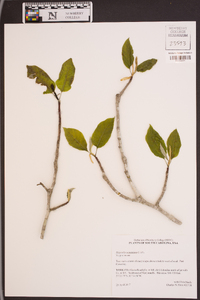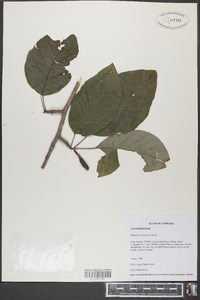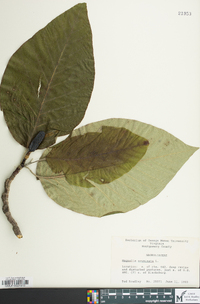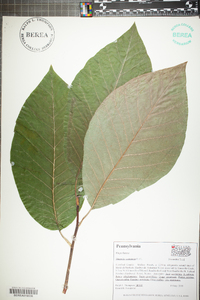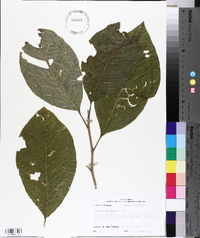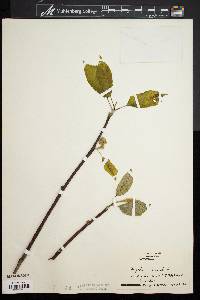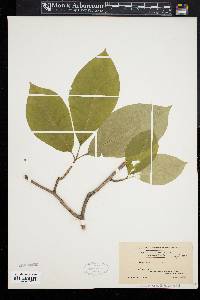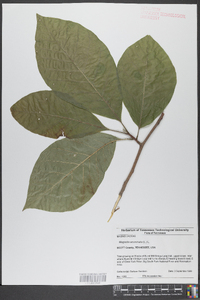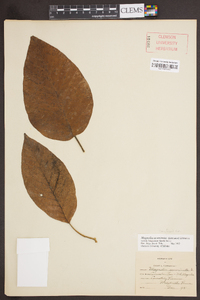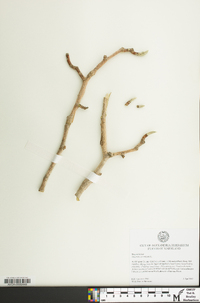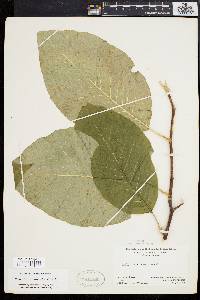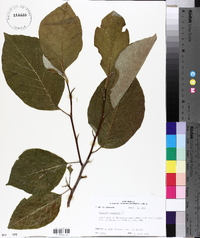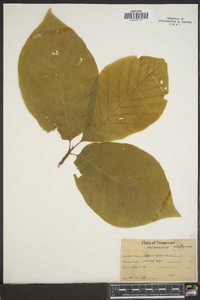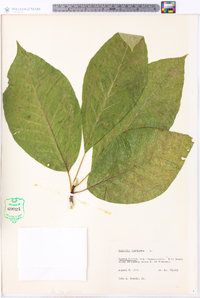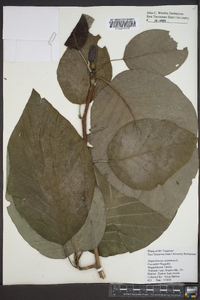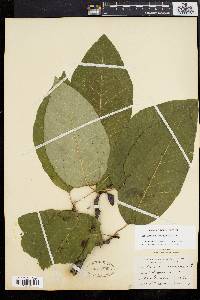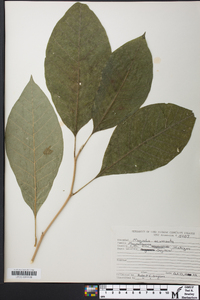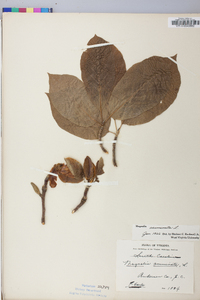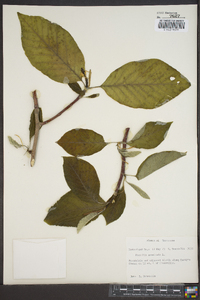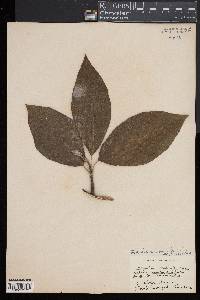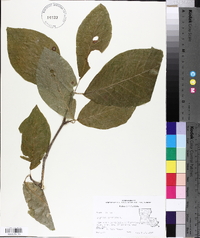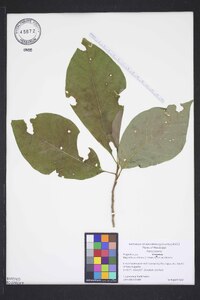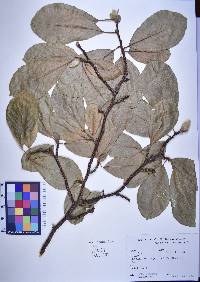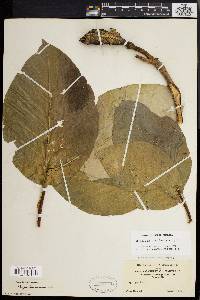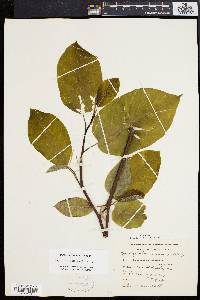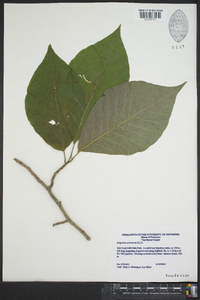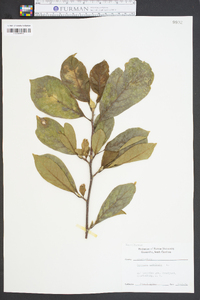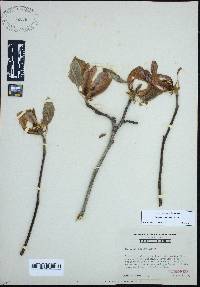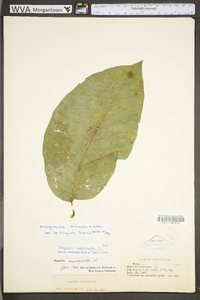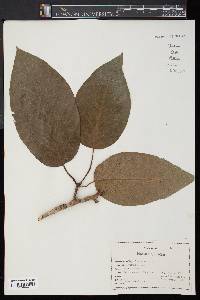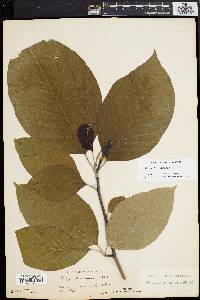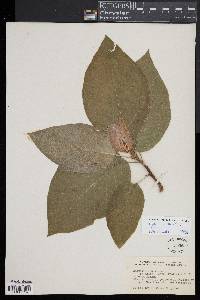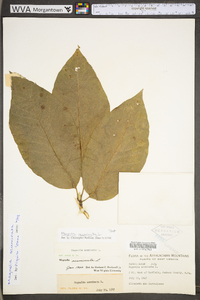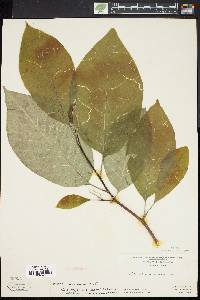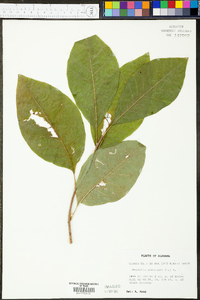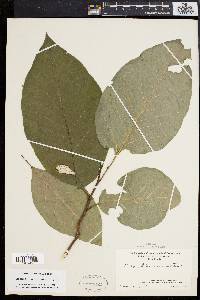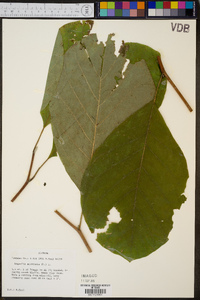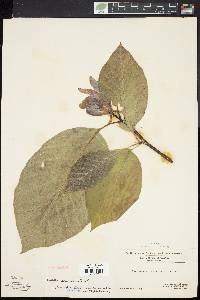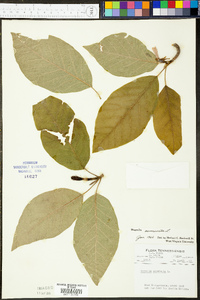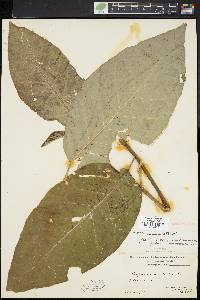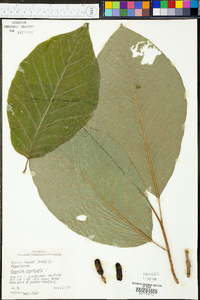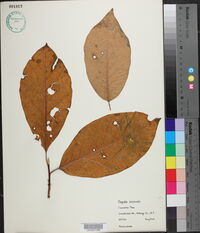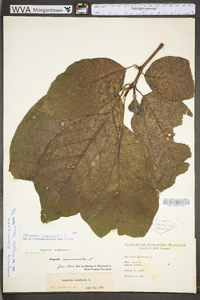Magnolia acuminata
|
|
|
|
Family: Magnoliaceae
Cucumber-Tree, more...Cucumber Magnolia, cucumber tree
[Magnolia acuminata var. ludoviciana] |
Trees, deciduous, single-trunked, to 30 m. Bark dark gray, furrowed. Pith homogeneous. Twigs and foliar buds silvery-pubescent. Leaves distinctly alternate, not in terminal whorl-like clusters; stipules 3.2-4.3 × 1.4-1.6 cm, abaxially pilose. Leaf blade broadly ovate-elliptic, oblong to oblong-obovate, rarely somewhat rotund, (5-)10-25(-40) × 4-15(-26) cm, base cuneate to truncate or broadly rounded, often somewhat oblique, apex acuminate; surfaces abaxially pale green to whitish, pilose to nearly glabrous, adaxially green, glabrous or rarely scattered pilose. Flowers slightly aromatic, 6-9 cm across; spathaceous bracts 2, abaxially silky-pubescent; tepals erect, strongly glaucous to greenish or sometimes yellow to orange-yellow, outermost tepals reflexed, much shorter, green; stamens (50-)60-122(-139), 5-13 mm; filaments white; pistils (35-)40-45(-60). Follicetums oblong-cylindric, often asymmetric, 2-7 × 0.8-2.7 cm; follicles short-beaked, glabrous. Seeds heart-shaped, somewhat flattened to somewhat globose, 9-10 mm, smooth, aril reddish orange. 2n =76. Studies of Magnolia acuminata have failed to reconcile the nature of variation in this widespread species. In an attempt to settle differences in variation patterns, J.W. Hardin (1954) recognized four infraspecific taxa in M. acuminata. Later (1972, 1989) Hardin abandoned his earlier views for a more conservative stance, stating that variation in M. acuminata lacked any consistent pattern or geographic correlation. This is the view taken here--no infraspecific taxa are accepted for M. acuminata at this time. Its flowers are normally greenish and glaucous or sometimes yellow to orange-yellow, less showy than those of other magnolias in the flora. In southern areas, trees with yellow to orange-yellow flowers (originally described by Michaux as M. cordata) occur in North Carolina, Georgia, Alabama, and perhaps elsewhere, together with trees that bear normal greenish flowers. Both filiform and flagelliform trichomes occur on the leaves; cylindric trichomes also occur. Magnolia acuminata is of value to horticulturists because no other species of the genus has yellow tepals. Magnolia acuminata contains major quantities of xanthophyll lutein-5,6-epoxide and, in smaller amounts, acarotene-5,6-epoxide. Although this carotenoid occurs randomly throughout populations of M. acuminata, often it is masked by chlorophyll and not visibly expressed. Sometimes the carotenoid pigment shows through, as in the hybrid M. acuminata × M. denudata 'Elizabeth'. In that cross the M. acuminata parent tree was a nondescript plant with greenish flowers; yet out of this hybrid came 'Elizabeth', a stunning plant with light canary yellow flowers, a result completely unexpected. A thorough field study of M. acuminata is clearly warranted, and further investigation of the carotenoid flower pigments is needed to clarify the taxonomy of this widespread tree. The largest known tree of Magnolia acuminata, 29.6m in height with a trunk diameter of 1.26m, is recorded from a specimen cultivated in Waukon, Iowa (American Forestry Association 1994). The Cherokee and Iroquois tribes used Magnolia acuminata, largely the bark, as an analgesic, antidiarrheal, gastrointestinal aid, anthelmintic, toothache remedy, and for various other uses (D.E. Moerman 1986). Synonyms: Magnolia acuminata var. alabamensis Ashe; M. acuminata Dandy; M. cordata Michaux; Tulipastrum acuminatum (Linnaeus)
Slender tree to 25 m; winter terminal bud 1-2.5 cm, white-hairy; lvs scattered, deciduous, broadly oblong or elliptic, 10-25 cm, half to two-thirds as wide, abruptly acuminate, basally acute to rounded or truncate, the lower surface green and minutely hairy; fls greenish-yellow; pet 6, ascending, 5-8 cm, oblanceolate or oblong spatulate, abruptly narrowed to the tip; styles filiform, promptly deciduous; fr-cone ellipsoid, 5-8 cm, the follicles glabrous; 2n=76. Rich woods; s. and w. N.Y. and s. Ont. to s. Mo. and e. Okla., s. to Ga., w. Fla., and La. May, June. Gleason, Henry A. & Cronquist, Arthur J. 1991. Manual of vascular plants of northeastern United States and adjacent Canada. lxxv + 910 pp. ©The New York Botanical Garden. All rights reserved. Used by permission. From Flora of Indiana (1940) by Charles C. Deam This tree was very local and was probably found in all the counties south of a line joining Richmond and Vincennes. In addition to my records it has been reported from Franklin, Floyd, Jefferson, and Orange Counties. I have been told that it grew also in Crawford, Decatur, Vanderburgh, Washington, and Wayne Counties. Now known in only a few counties. .…… Indiana Coefficient of Conservatism: C = 10 Wetland Indicator Status: FACU Deam (1932): The cucumber tree has been too rare in Indiana to be of economic importance. The greatest interest with us is its distribution. The uses of the wood are sililar to that of tuliptree with which it is botanically related. It is said that the greater part of the lumber which is produced in the south is sold as tuliptree. The seeds of this tree are extremely bitter and no bird, squirrel, or mouse will carry or touch them. However, man after macerating them in whisky can use them for medicine. |

